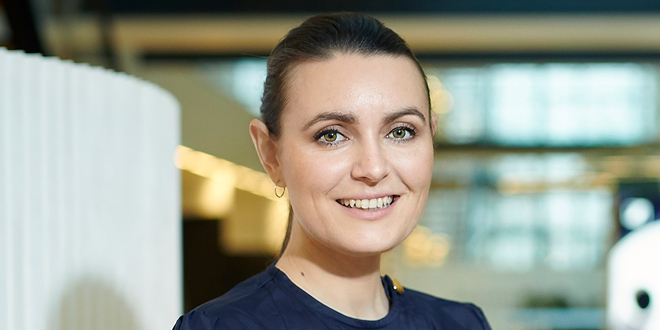Bianca Nesgaard, Vice President of Global Marketing, Enterprise Solutions at Sennheiser, looks at how technology is evolving to support modern workplaces.
Over the past two decades we have seen an evolution of our workspaces. The traditional office layout of cubicles and private offices has become a relic of the past century.
Forward-thinking companies have long aspired to a more open-plan design that has changed the face of our organisational work environments as well as the way we work today.
Open offices are no longer just a trend – they are now the new norm, creating new opportunities of working together as well as an office environment that is more vibrant and connected than ever before.
Still, every opportunity comes with a price. While tearing down the walls between us and our colleagues has certainly opened up new
possibilities to stimulate team bonding and boost creativity. The disposal of the cubicle hasn’t just brought teams closer together – it also created consequential new challenges that can sometimes interfere with everyday work: ranging from increased noise levels and a decrease in personal space, the latter of which ultimately fuels the level of noise throughout the day.
Recent studies show that open workspaces can result in 72% less time spent interacting in person, and instead workers are sending 56%
more emails – thus creating less direct interaction amongst colleagues. Additionally, the increased level of noise in the open office causes distractions, lack of focus and an almost 30% decrease in productivity. Up to 30% of modern office workers state that they are dissatisfied with open workspace noise. A total of 63% claim that loud colleagues are their greatest distraction and almost 90% say that they are more productive when working alone.
However, this isn’t cause to bring back the cubicle. At Sennheiser, we believe in a different way. The open workspace was created as an answer to the new needs of the modern workforce. The decrease in space per person, freely selectable “hot desks”, being able to walk around during a call instead of sitting in a square space as well as flexible working hours – all by-products of the open office, designed to help host a diverse set of working styles, all in one office. This way each employee can choose to work their way according to their personal preferences instead of conforming to working styles enforced by traditional layouts.
Sennheiser is working with organisations to address these challenges and ultimately to provide the tools to overcome them. Our recent The Way We Work study shows that almost a third of the workforce already uses a headset as a daily tool to block out office noise, concentrate and work productively without distraction. 23% of office workers say that noise cancelling is one of the three most important criteria when selecting a new headset. Meanwhile, for those looking to boost productivity – 27% of today’s office workers like to listen to music while working to block out the noise of their co-workers.
Modern employees need to be able to create their own quiet zone and define the way they want to work. While open offices have many benefits, creating a quiet work environment is often-times not one of them. While huddle rooms and quiet areas can go some way to help, audio devices like noise cancelling headsets increase focus, enhance collaboration and foster a modern, mobile and flexible workstyle.
Office audio solutions are a key working tool in boosting efficiency and productivity in the modern work life. When developing our headsets, we respond to the trends and needs of the modern workplace and focus on technologies that support flexibility, focus and productivity. Our goal is to support employees to adapt to the modern work environment and overcome the challenges of the open office – this way, they can ultimately reimagine the way they work in the long run.
Like this content? Sign up for the free PCR Daily Digest email service to get the latest tech news straight to your inbox. You can also follow PCR on Twitter and Facebook.
Read the latest edition of PCR’s monthly magazine below:
 PCR Tech and IT retail, distribution and vendor news
PCR Tech and IT retail, distribution and vendor news




